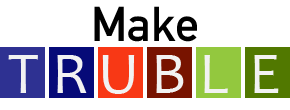1049 total view(s), 515 download(s)
Final Swirl Lesson Plan for Population Demography_v2.pdf(PDF | 13 KB)
Population Demography Worksheet.pdf(PDF | 175 KB)
Population_Demography.swc(SWC | 305 KB)
Results Grading Rubric_student.pdf(PDF | 117 KB)
Results Grading Rubric_student.pdf(PDF | 117 KB)
- License terms
Description
This lesson centers around comparing the survivorship of two groups using a life table derived from tombstone information. Students will work through calculating some elements by hand via a worksheet alongside working in R. This swirl lesson goes step-by-step to show students how to do basic data manipulations, graphing, visual inspection of the data, and statistical tests as they work an example dataset with respect to a given hypothesis (whether males and females have the same life history curve). Students are then expected to repeat the coding steps they learned in R to test a hypothesis of their own.
Learning objectives:
|
|
|
|
Notes
Please feel free to adapt this for use with other cemetery, longevity, or death datasets, provided that you are always respectful of the people your data represent.
Note:
Version 2.0 reorders the lessons and has code to get around package-dependences. Also, based on field tests, the lesson plan now includes code to help students with computer-specific issues on package installation found to be specific to Macs/Linux systems.
Version 3.0 builds on the last version by adding in commands which ensure matrices are built correctly in the newest packages. This version also adds a warning to examine the data within a generated matrix, specifically regarding 0's in comparison groups which can cause errors in running chi-square and G-test functions in edge cases.
Version 4.0 adds additional instructions to aid with the code when run in base R (outside of swirl/RStudio).
Version 4.1 corrects a minor typo and provides an alternate instruction for graphing code use outside of swirl.
Cite this work
Researchers should cite this work as follows:
- Emily Weigel (2020). Population Demography in Swirl. Make Teaching with R in Undergraduate Biology Less Excruciating, (Version 4.1). QUBES Educational Resources. doi:10.25334/J72J-MZ12
